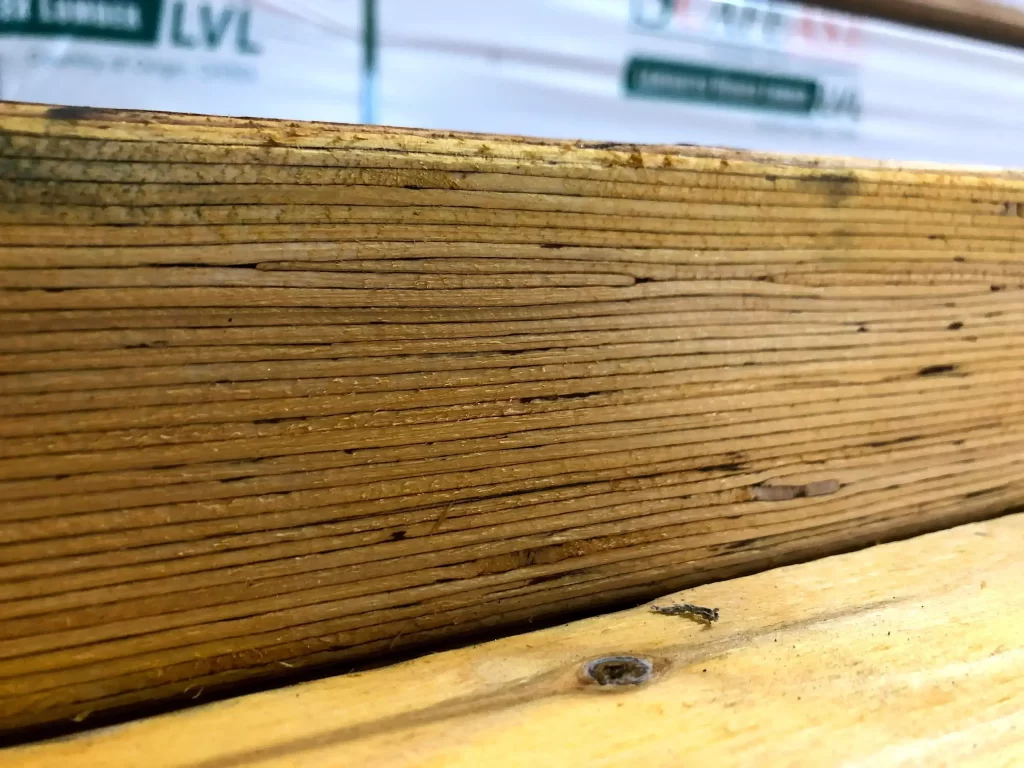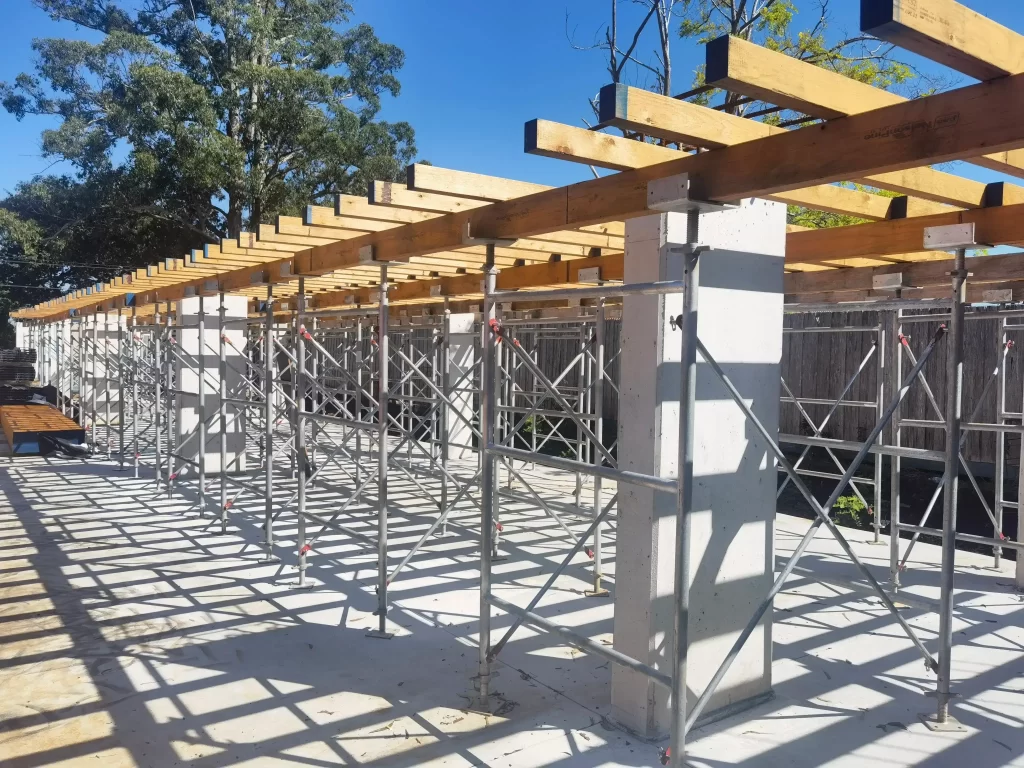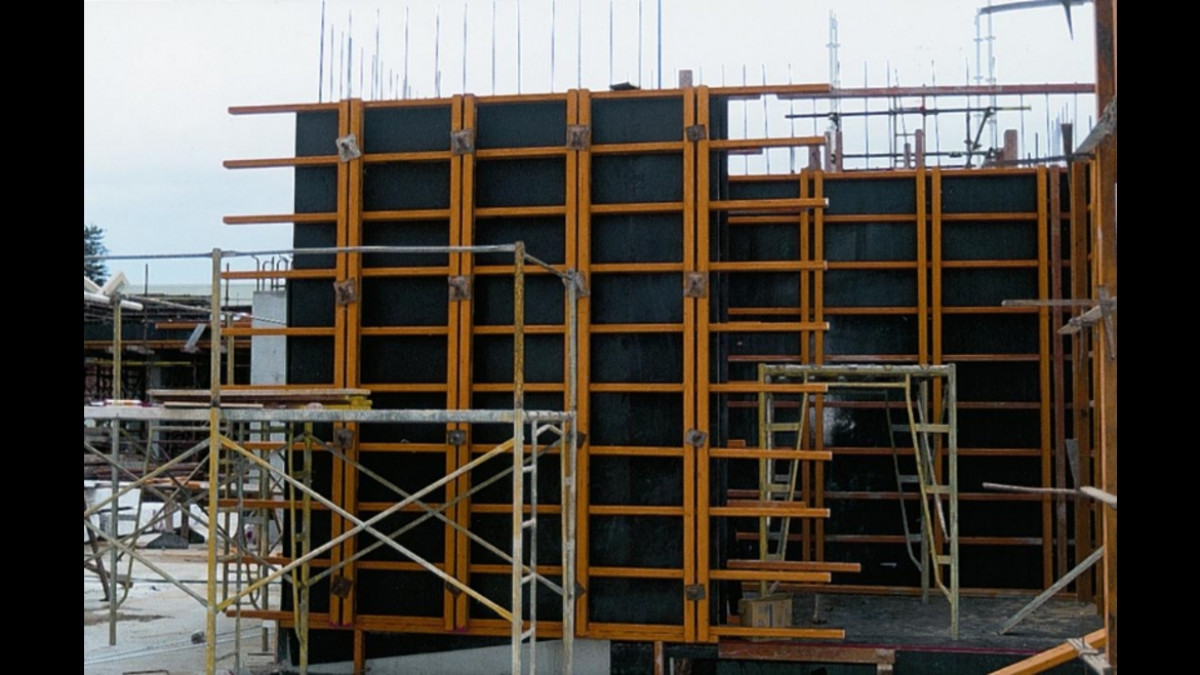LVL (Laminated Veneer Lumber) formwork has become increasingly popular in architectural designs due to its versatility and numerous benefits. From improving structural integrity to enabling innovative design possibilities, LVL formwork is revolutionizing the construction industry. In this article, we will explore the various aspects of LVL formwork and its creative applications in architectural designs.
Understanding LVL Formwork
Before delving into its creative uses, it is crucial to understand what formwork lvl is and its essential properties. LVL formwork is a type of engineered wood that consists of multiple layers of thin wooden veneers bonded together with high-strength adhesives. This construction technique enhances the material’s strength and durability while maintaining its flexibility.
Definition and Properties of LVL Formwork
LVL formwork is renowned for its exceptional load-bearing capacity, making it an ideal choice for constructing structural elements such as beams, columns, and walls. Its superior strength-to-weight ratio allows architects to design larger and more complex structures with ease. Additionally, LVL formwork exhibits excellent dimensional stability, minimizing the risk of warping or twisting during construction and ensuring long-term performance.

Benefits of Using LVL Formwork in Construction
Using LVL formwork in architectural designs offers several advantages for both builders and designers. Firstly, it provides cost-effective solutions due to its efficient production process and reduced labor requirements. Moreover, LVL formwork is environmentally friendly as it utilizes sustainable wood resources and reduces the carbon footprint compared to traditional building materials.
In addition to its cost-effectiveness and sustainability, LVL formwork offers enhanced safety during construction. Its predictable and reliable performance reduces the risk of structural failures, ensuring the safety of workers and occupants. Furthermore, LVL formwork’s compatibility with various construction methods and materials allows for seamless integration into architectural designs.
Another noteworthy benefit of LVL formwork is its versatility in adapting to different project requirements. Whether it is a residential, commercial, or industrial construction, LVL formwork can be customized to meet specific design needs. Its flexibility allows architects to explore innovative and unique designs, pushing the boundaries of what is possible in construction.
Furthermore, LVL formwork offers excellent fire resistance properties, making it a reliable choice for structures that require high fire safety standards. Its ability to withstand extreme temperatures and maintain its structural integrity provides peace of mind to both builders and occupants.
Lastly, LVL formwork is known for its ease of installation and dismantling. The lightweight nature of the material makes it easier to handle and transport, reducing construction time and labor costs. This efficiency is particularly beneficial in projects with tight schedules or limited resources.
In conclusion, LVL formwork is a versatile and reliable construction material that offers numerous benefits for builders and designers. Its exceptional load-bearing capacity, dimensional stability, cost-effectiveness, and sustainability make it an attractive choice for a wide range of construction projects. Whether it is used in residential, commercial, or industrial applications, LVL formwork provides the strength, safety, and flexibility required to bring architectural designs to life.
The Role of LVL Formwork in Architectural Design
LVL formwork not only provides structural support but also influences critical design choices. Architects are increasingly incorporating LVL formwork into their designs to achieve both aesthetic and functional objectives.
When considering the role of LVL formwork in architectural design, it is essential to delve into the intricate ways in which this material impacts the overall construction process. Beyond its structural significance, LVL formwork serves as a canvas for architectural creativity, allowing designers to push the boundaries of traditional building techniques and explore new realms of possibility. Learn more about traditional building techniques click here.

How LVL Formwork Influences Design Choices
The versatility of LVL formwork allows architects to explore innovative design possibilities. Its high strength and flexibility enable the creation of unique curvatures, intricate patterns, and unconventional shapes that were previously challenging to achieve. By incorporating LVL formwork into architectural designs, architects can create visually appealing structures that stand out in the built environment.
Moreover, the use of LVL formwork opens up a world of sustainable design opportunities. As architects strive to prioritize eco-friendly practices, LVL formwork emerges as a viable solution due to its renewable nature and minimal environmental impact. This emphasis on sustainability not only aligns with current architectural trends but also underscores the importance of responsible construction practices in shaping the future of our built environment. Learn more about Longevity and Durability of LVL Formwork Components visit at https://hanningtonsestate.com/longevity-and-durability-of-lvl-formwork-components/
The Impact of LVL Formwork on Structural Integrity
Structural integrity is of utmost importance in architectural design. LVL formwork significantly enhances the structural performance of buildings by providing stability, rigidity, and load-bearing capabilities. Its ability to withstand heavy loads and resist deformation ensures the longevity and durability of the constructed structures.
Furthermore, the integration of LVL formwork into architectural projects contributes to the overall safety of the built environment. By reinforcing key structural elements with LVL formwork, architects can mitigate risks associated with structural failure and ensure the well-being of occupants within the spaces they design. This emphasis on safety underscores the holistic approach that architects take in balancing both aesthetic aspirations and practical considerations in their architectural endeavors.
Innovative Applications of LVL Formwork
The versatility of LVL formwork extends beyond traditional structural elements. Architects are continually exploring new ways to utilize LVL formwork in both residential and commercial projects.
One innovative application of LVL formwork in residential buildings is its use in creating sustainable and energy-efficient homes. By incorporating LVL formwork in the construction of walls and roofs, architects can enhance the thermal performance of the building, reducing energy consumption for heating and cooling. This not only benefits the environment but also leads to long-term cost savings for homeowners. Learn more about innovative applications of LVL formwork visit at https://www.fomexgroup.vn/plywood-news/what-is-lvl-how-is-it-made-and-the-application-of-lvl.html.
LVL Formwork in Residential Buildings
LVL formwork offers a range of possibilities for residential architecture. From creating curved staircases to designing unique facades, LVL formwork adds an element of visual interest to residential structures. Furthermore, its load-bearing capacity allows for the construction of open floor plans and the integration of large windows, enhancing the flow of natural light and creating a sense of spaciousness.
Another intriguing use of LVL formwork in residential projects is in the construction of modular homes. By prefabricating LVL formwork panels off-site, builders can significantly reduce construction time and costs while maintaining high quality. This method of construction not only streamlines the building process but also allows for greater design flexibility, enabling homeowners to customize their living spaces according to their preferences.
LVL Formwork in Commercial Structures
In commercial architecture, LVL formwork finds applications in various areas. It can be used to construct grand entrances, atriums, and other visually striking features that leave a lasting impression on visitors. LVL formwork’s strength and durability also make it suitable for large-span structures such as exhibition halls and sports arenas, where maximizing open spaces is crucial.
Moreover, LVL formwork is increasingly being utilized in the construction of sustainable office buildings. By incorporating LVL formwork in the design of office spaces, architects can create environments that promote employee well-being and productivity. The natural aesthetic of LVL formwork adds warmth and character to modern office interiors, fostering a sense of connection to nature within the workplace.
Future Trends in LVL Formwork Usage
As technology continues to advance and sustainability becomes a paramount concern, the future of LVL formwork looks promising. Several trends are expected to shape its usage in architectural designs.
One of the key future trends in LVL formwork usage is the integration of smart technologies. With the rise of the Internet of Things (IoT) in the construction industry, LVL formwork systems are being equipped with sensors and data analytics capabilities. These smart formwork systems can provide real-time information on factors like load distribution, temperature, and structural integrity, allowing for proactive maintenance and improved safety on construction sites.
Technological Advancements and LVL Formwork
Advancements in manufacturing techniques and digital design tools are expected to further enhance the capabilities of LVL formwork. Computer-aided design software and parametric modeling techniques enable architects to optimize LVL formwork structures for maximum strength, efficiency, and aesthetic appeal.
Moreover, the use of robotic construction techniques in conjunction with LVL formwork is on the horizon. Robots equipped with advanced algorithms can precisely assemble LVL formwork components, reducing human error and increasing construction speed. This fusion of robotics and LVL formwork is set to revolutionize the way buildings are constructed, leading to greater precision and cost-efficiency in the industry.
Sustainability and LVL Formwork
As sustainability becomes an integral part of architectural design, LVL formwork’s eco-friendly nature makes it a preferred choice for builders and designers. With increasing awareness about climate change and sustainable practices, LVL formwork’s usage is likely to grow, contributing to a greener and more environmentally conscious construction industry.
In addition to its eco-friendly properties, LVL formwork is also known for its durability and reusability. Unlike traditional formwork materials, such as timber or steel, LVL formwork can withstand multiple uses without compromising its structural integrity. This longevity not only reduces construction waste but also lowers overall project costs, making it a cost-effective and sustainable solution for modern architectural projects.
Overcoming Challenges with LVL Formwork
Although LVL formwork offers numerous benefits, there are certain challenges associated with its usage. However, these challenges can be addressed with proper knowledge and implementation of best practices.
Common Issues in Using LVL Formwork
One common challenge faced with LVL formwork is moisture-related issues. LVL is susceptible to moisture absorption, which can lead to swelling or warping. This can pose a significant problem, especially in areas with high humidity or where water exposure is likely. Additionally, proper handling and storage of LVL formwork are crucial to prevent damage during transportation and construction.
Another challenge that can arise when using LVL formwork is the need for precise measurements and cuts. Due to its natural variations in grain and density, LVL may require extra attention to ensure accurate dimensions. This can be time-consuming and may require additional effort to achieve the desired results.
Solutions and Best Practices for LVL Formwork Use
To overcome moisture-related issues, applying appropriate surface coatings and sealants can protect LVL formwork from water absorption. These protective measures create a barrier that prevents moisture from penetrating the surface of the LVL, reducing the risk of swelling or warping. Furthermore, carefully monitoring and controlling environmental conditions during construction can help minimize the risk of dimensional changes in LVL formwork. This includes maintaining proper ventilation and temperature control on the construction site.
When it comes to precise measurements and cuts, using advanced cutting tools and techniques can help ensure accuracy. Employing computer-aided design (CAD) software can assist in creating precise templates and layouts for cutting LVL formwork. Additionally, having skilled craftsmen who are experienced in working with LVL can make a significant difference in achieving accurate results.
In conclusion, while LVL formwork presents challenges such as moisture-related issues and the need for precise measurements, these challenges can be overcome with the right knowledge and practices. By implementing protective measures against moisture and utilizing advanced cutting tools, LVL formwork can be used effectively in construction projects. With its versatility and structural advantages, LVL formwork continues to shape the future of construction, allowing architects and builders to create stunning and efficient buildings for generations to come.

Leave a Reply